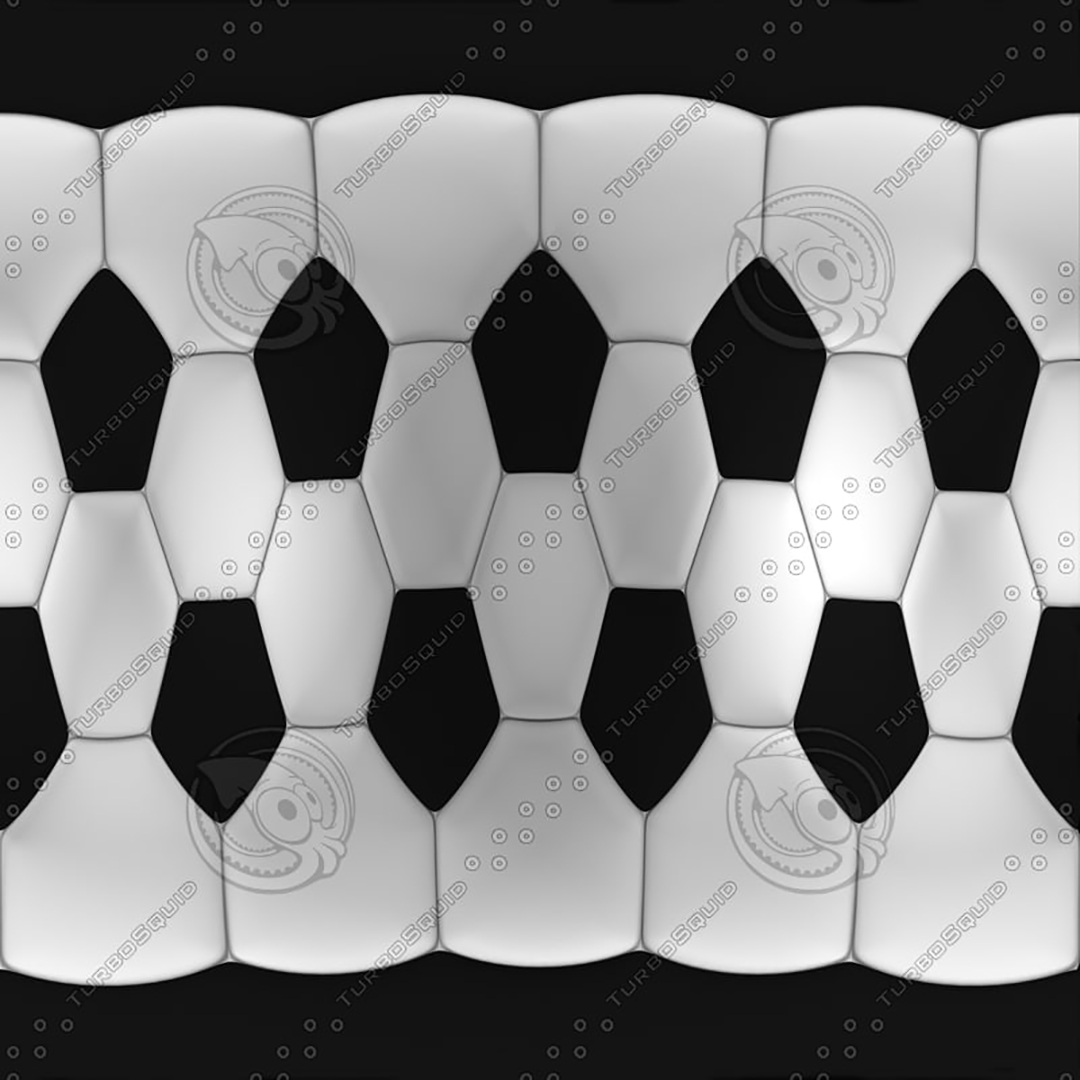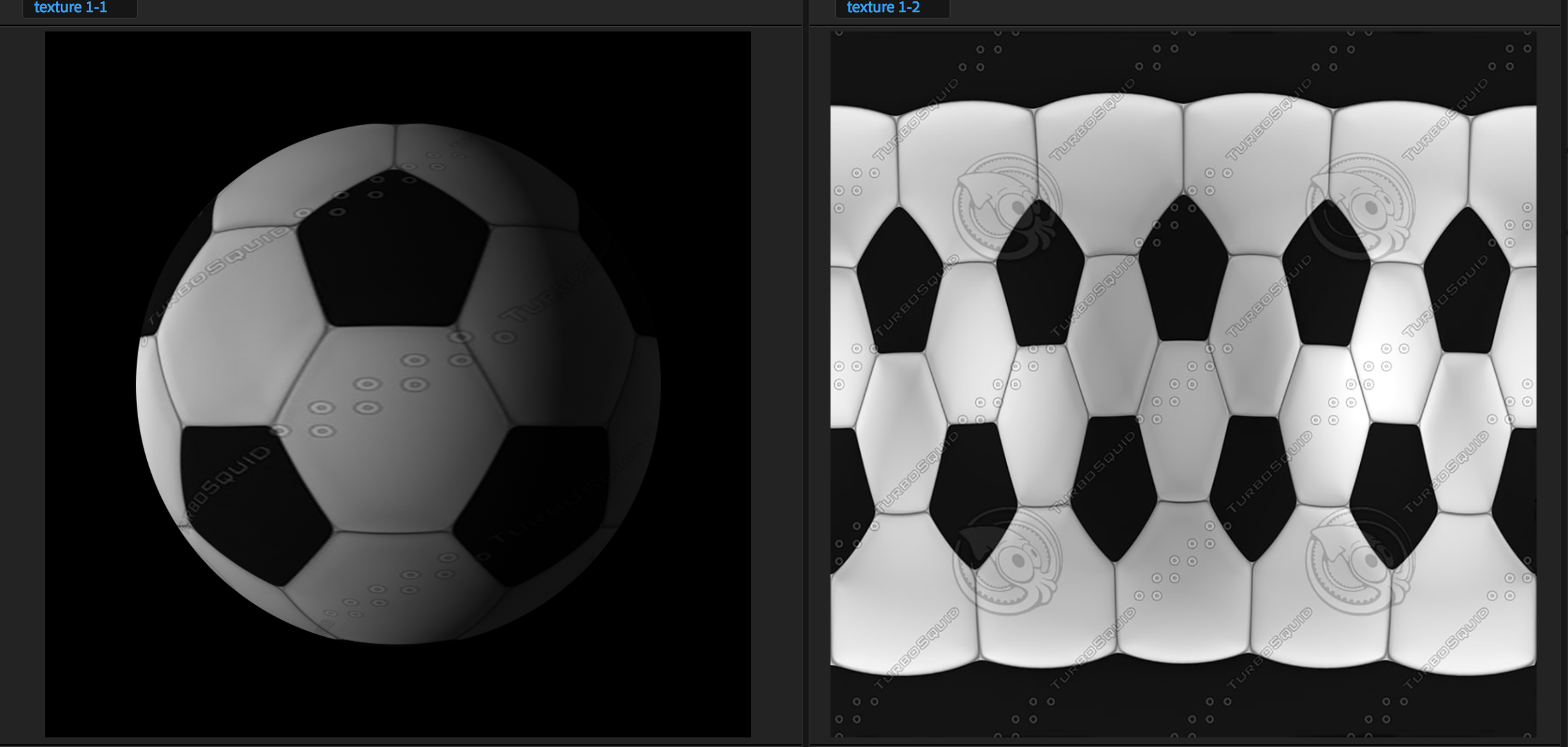Copy link to clipboard
Copied
Hi everybody
I have been looking for an answer to a problem all day long and this forum is my last hope, so here it goes. I need to do some motion graphics which will ultimately result in a projection on a sphere.
Making something 1:1 or 2:1 will pretty much do the job except that at the poles the distortion is quite unacceptable. I have been using as a test, the CC Sphere Fx as it pretty much replicates the real sphere.
Nothing I do seems to get rid of the distortion at the poles. I downloaded an HDRI image from a website and when using the CC Sphere on that image, it maps the sphere PERFECTLY.
I looked at sites like TURBO SQUID for textures for spherical items and I downloaded a football texture which when used with the CC Sphere worked marvellously well. ( I am attaching that image as an example) so my question, or better, questions are:
1- how to make an HDRI image?
2 - How distort my existing content into something along the lines of the football texture?
thanks for your help.
Miguel

 1 Correct answer
1 Correct answer
You can make HDRI maps for this in Photoshop. Here's a tutorial for you 🙂
http://lesterbanks.com/2014/01/create-spherical-hdris-right-photoshop-hydra-hdri-pro/
Copy link to clipboard
Copied
That one won't work properly with CC Sphere -- it's not a 2:1 ratio.
Copy link to clipboard
Copied
Dear Dave
Thank you for your reply. The texture works just fine with CC Sphere. Looks like a 2:1 and a 2:1 produce the same result

Copy link to clipboard
Copied
You can make HDRI maps for this in Photoshop. Here's a tutorial for you 🙂
http://lesterbanks.com/2014/01/create-spherical-hdris-right-photoshop-hydra-hdri-pro/
Copy link to clipboard
Copied
Dear Angie
Many thanks for your reply. The is an excellent start. Is there anything similar for AEP? The ultimate goal is to make some motion graphics.
Thanks
M
Copy link to clipboard
Copied
Let me say one thing about dimensions for an image that you wrap around a sphere. If you want an undistorted equator and pixel for pixel accuracy for the most resolution you have to use basic geometry and figure the height of your image when it is rendered.
Let's say you are working in HD and you want to push the camera in to focus on approximately 1/4 of the sphere. Think of that portion of the image as a square. The height of that square would need to be 4 times the height of the comp or 1080 * 4. That makes the vertical dimension of your spherical map 4320 pixels. To figure the horizontal dimensions of your "texture map" you multiply that dimension by π (3.141...) because the formula to calculate the diameter is C = π D or 2πR. The texture map should be 4320 X 13570. The ratio Dave suggested is 2:1 but it really should be 3:1 to avoid horizontal stretching. Every pixel should except the ones around the equator are going to be re-interpreted to fit the sphere, but to keep squares close to square you need to follow the rules of geometry. The sample texture map works because it is stretched to fit, but the pentagons are already squished.
Here is some more info on HDRI images: Size and Distance in HDRI Maps | HDR Light Studio Blog
If you want to create the distortions necessary to use the images as environment maps then you'll need 3RD party plug-ins or you'll need to take a bunch of flat images and use the ability of AE to create a projector and project them on the inside of a sphere. The workflow required and the tools to make the process more efficient depend entirely on what you are trying to do. It would really help us if we knew exactly what you are trying to accomplish and what resources you have.
Copy link to clipboard
Copied
Hi Rick
Thank you very much for your reply. Basically, if it helps, I am trying ti achieve with moving images what HYDRA HDRI - Hydra HDRI Pro Photoshop Plugin does for still images. Ultimately I am considering creating my footage and them run each and every frame through PSD to make an HDRI out of each of them.
Thanks
M
Copy link to clipboard
Copied
You might find this of interest?
Copy link to clipboard
Copied
Hi Angie
Thank you very much for the tip
I bought the plugin without reading the small print ;-(
"Please note that this plugin is not compatible with CS6 or above"
Oh well...
Tnaks
M
Copy link to clipboard
Copied
Ah, sorry! I missed that too! If you have CC you can download older versions on the software and they can be installed alongside the current version.
Copy link to clipboard
Copied
Hi Angie
No problems. This looks like a really complicated issue. your Advice to use the Hydra plug in for PSD seems to be a possibility, i.e, to run each frame through PSD and ten reassemble the movie again. I have contacted them to see if it was possible to get hold of a demo version of the plugin but never had a reply :-). Plugin is not terribly expensive but is an expense that i do not want to risk in a very very tight budget in case it doesn't work.
Thanks
Miguel
Copy link to clipboard
Copied
Hi Miguel, did you ever find a solution? Please let us know.
Thanks,
Kevin
Find more inspiration, events, and resources on the new Adobe Community
Explore Now
